This post shares the best non-toxic bakeware and will teach you the types of bakeware that are safe to buy, and the types of bakeware you should avoid.
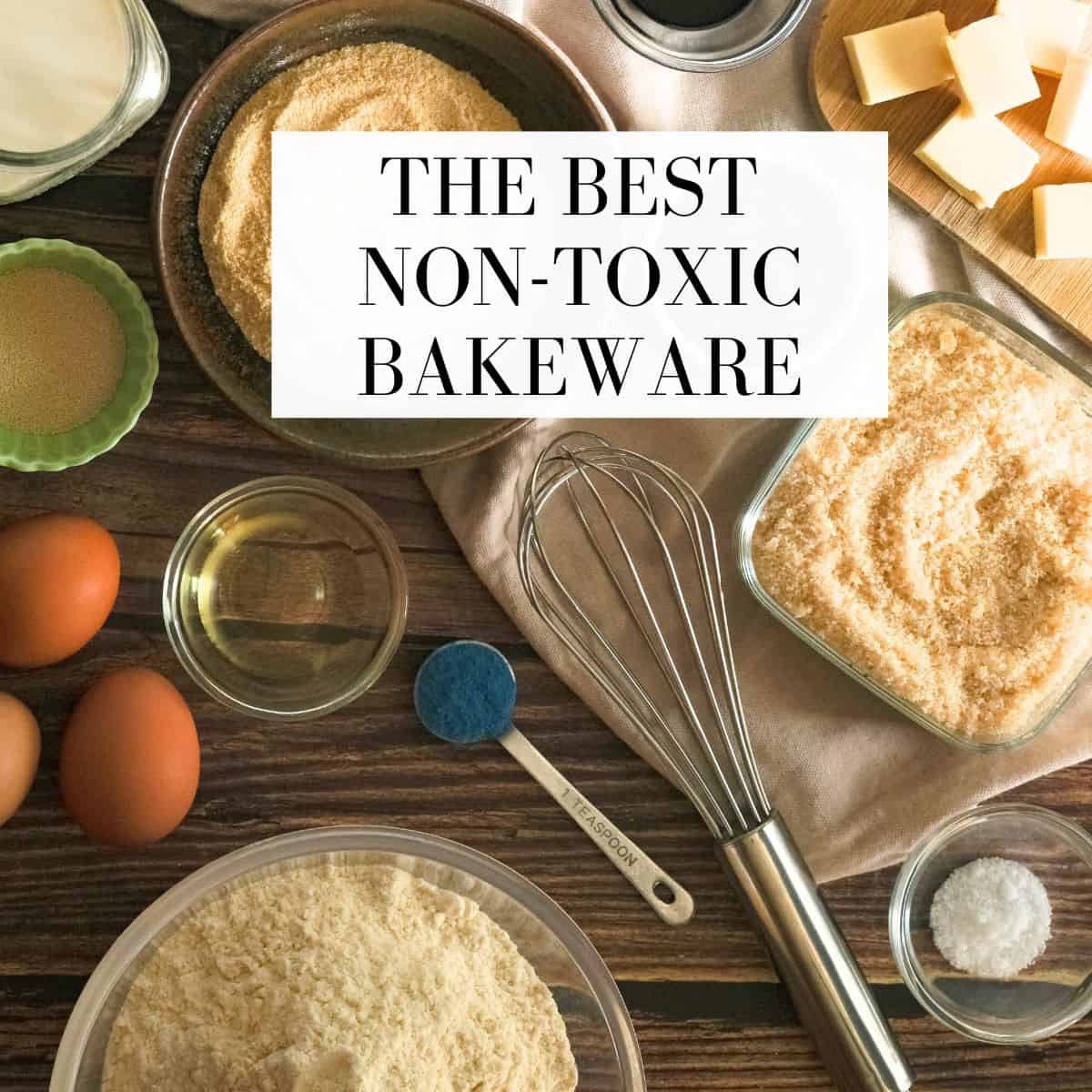
Disclaimer: some of the links in this post are affiliate links where I make a small commission if you purchase the product through that link. This does not cost you anything extra and helps me keep this website running.
Table of Contents
Why choose non-toxic bakeware?
If you are like me, you love to bake. But when you do bake, you want to be sure that the bakeware you are using is safe and non-toxic. Unfortunately, many of the chemicals that are used in bakeware, mainly the nonstick chemicals and coatings, can be bad for our health, so you want to be sure to avoid them.
In this post I will teach you what types of bakeware are safe and worth investing in, and what types of bakeware you will want to avoid.
Materials to avoid in bakeware:
1. Non-stick bakeware
Non-stick bakeware is popular because it's convenient and so easy to use. However, the most common types of non-stick bakeware on the market, the ones made with Teflon coatings and other non-stick coatings can be harmful to our health.
Most non-stick cookware and bakeware is made with a group of chemicals called Per- and Polyfluorinated Substances (PFAS) chemicals. This group of chemicals includes PFOA and Teflon. PFAS chemicals are known as “forever chemicals” because they are persistent, meaning they build up and don’t go away. They resist breakdown and they remain in our bodies for years, and sometimes even decades after exposure.
PFAS, even at low doses, can be harmful to health and are known to have a number of harmful effects on human health including but not limited to:
- They are endocrine disruptors (also known as hormone disruptors).
- Can decrease sperm counts.
- Can lead to metabolic diseases including obesity and diabetes.
- Can contribute to cardiovascular disease.
- Increase cholesterol levels.
- They can increase the risks of certain cancers including thyroid and kidney cancer.
- Can increase the chances of miscarriages in pregnancy.
- Can cause thyroid disease.
- Increase the risk of allergies and asthma in children.
In other words, you want to avoid PFAS chemicals, and thus non-stick bakeware and cookware.
2. Ceramic coated bakeware
Ceramic coated cookware and bakeware is often advertised as a safe, non-toxic alternative to traditional non-stick bakeware (like the ones coated with PFAS chemicals), but unfortunately, ceramic bakeware may not be as safe as most brands advertise.
To summarize, the ceramic coatings used by many brands have been found to release titanium dioxide nanoparticles from the non-stick coating into food and some of the most popular brands of ceramic coated cookware and bakeware including Our Place cookware and Caraway cookware do use nanoparticles in their coatings.
This is concerning because ingestion of nano titanium dioxide has been shown to cause many different health issues including: causing harmful effects on male fertility (including damaging sperm), damaging the liver, testicles, heart, brain, kidneys, as well as altering the gut microbiome.
The good news is that in undamaged ceramic coatings, the titanium dioxide nanoparticles don't get released until exposed to temperatures of 500°C or higher. So, with typical baking temperatures the nanoparticles shouldn't be released.
However, studies show that any surface scratches or damage to the ceramic coating (which can occur with normal use of this type of bakeware) leads to significant release of the titanium dioxide nanoparticles. This means that if your ceramic coated bakeware is in perfect condition (ie. has no scratches or signs of use) and you don't heat it to excess, then you should be safe.
However, once the surface of the bakeware items have any scratches or imperfections they would no longer be safe to use. In my experience ceramic coated bakeware tends to last less than a year before it starts to show signs of use, so that would mean that you would need to be replacing your bakeware on an annual basis, which is not only very expensive, but is also bad for the environment.
Another issue with ceramic coated bakeware, are that the materials used underneath the ceramic coating can also be harmful or dangerous, so if the coatings do get scratched or damaged you then get exposed to the harmful materials underneath.
3. Silicone
While you will see other websites stating that silicone is a safe bakeware option, I have concerns with the safety of silicone bakeware. While I have no concerns with using silicone for storage purposes or at cooler temperatures (such as with reusable silicone food storage bags), I am concerned with heating silicone to the high temperatures required for baking.
There is data that shows that when heated above 100°C or 212°F, silicone elastomers will migrate out of the silicone, and at temperatures around 150°C or 302°F and higher, silicone elastomers start to degrade even further. What this means is that these breakdown products will start to migrate into the food you are cooking or baking at these temperatures, which is something that of course we want to avoid.
4. Glazed bakeware
Some ceramic cookware and bakeware brands use glazes and coatings to seal the ceramic. Unfortunately, these glazes can contain harmful chemicals or materials including heavy metals like lead and cadmium that can leach into food.
There are even case reports of people getting lead toxicity from glazed ceramic cookware and bakeware. This is why you want to avoid any glazed bakeware or glazed ceramic bakeware, unless the brand tests their glazes for heavy metal leaching to ensure they are safe.
The colorants, and in particular red and orange colorants on ceramic cookware seem to be the worst when it comes to containing and leaching heavy metals. That is why you don't see any coloured ceramic cookware listed as safe in this post.
Safest bakeware materials:
Here is a summary of safe and non toxic-bakeware materials. I will explain these in more detail in the following paragraphs:
- Glass - just be sure to get pure, clear glass rather than tinted glass.
- Stainless steel - use only pure stainless steel and avoid stainless steel coated in non-stick or ceramic coatings.
- Pure ceramic - use only pure ceramic and not ceramic coated.
- Cast iron - note that cast iron is a safe cookware material, but I have not been able to find any pure cast iron bakeware on the market. I have only been able to find enamled cast iron or cast iron coated in non-stick coatings which I do not recommend (read more on why later in this post). You can get great cast iron skillets and pans however.
- Carbon steel - like cast iron, carbon steel is a safe cookware material, but I have not been able to find any carbon steel bakeware that is not coated in a non-stick coating of some sort.
These are the only materials I personally recommend using for baking your food.
Now I will discuss the pros and cons of each of these types of bakeware.
1. Glass bakeware
Pros of glass bakeware:
There are many good things about glass bakeware. It's affordable, easy to find, dishwasher safe, and easy to clean. It's also safe to use at high heat and is very durable. Glass heats evenly and won't alter the taste or odour of your baked goods. I also love that because it's clear you can see your food as it's baking.
Glass is also freezer, refrigerator, oven, and microwave-safe. A few types are also stovetop-safe and glass works well for storing food.
Cons of glass bakeware:
There are a few downsides to glass bakeware. It is not non-stick so you will need to grease the dishes well or line them with parchment paper. It does heat up slowly compared to some other baking materials and glass can break if you drop it so needs to be handled with care. It is also not safe for use with a broiler.
As well, if you heat glass too quickly from a cold temperature it has the risk of cracking and tinted glass can contain heavy metals so be sure to stick with clear glass bakeware.
2. Stainless steel bakeware
Pros of stainless steel bakeware:
There are many great things about stainless steel bakeware. It's very durable and should last forever, is dishwasher safe, is inexpensive, and is the best option when it comes to non-toxic baking sheets.
Cons of stainless steel bakeware:
The main downside to stainless steel bakeware is that it isn't non-stick, so you will need to grease it well or line it with parchment paper to make it easier to use. It's also not a good option for food storage and isn't microwave safe.
Stainless steel also conducts heat slowly and stainless steel does release low levels of nickel and chromium (this is especially true if you cook acidic foods like tomatoes in stainless steel). For most people, the release of these low levels of nickel and chromium should not be a concern, but for those who have a nickel or chromium sensitivity or allergy this would be a problem.
Additionally, any damaged stainless steel bakeware should be discarded to decrease your heavy metal exposure. Damaged stainless steel will release higher levels of nickel and chromium, which you want to avoid. As well, the amount of heavy metal leaching will depend on the stainless steel grade, so I recommend using high quality, surgical-grade stainless steel bakeware, and it’s even better if it’s nickel-free.
3. Pure ceramic bakeware
Pros of ceramic bakeware
There are many good things about ceramic bakeware. It won't alter the taste of your food, is very durable and will last a long time, it can be used on the stovetop, grill, oven, broiler, and in the microwave. Ceramic is also freezer safe and safe for the fridge and can be used for food storage.
Ceramic also has good heat retention and distribution and is less sticky compared to other types of eco-friendly cookware (like stainless steel for example).
Cons of ceramic bakeware
The main drawback of ceramic bakeware is that it is more expensive than other safe bakeware options and is heavier. It also heats up more slowly compared to some other types of bakeware and can break if it's dropped.
The best non-toxic bakeware brands:
Now that we have reviewed what types of bakeware materials are safe I wanted to share some non-toxic bakeware brands and what I personally use and love.
Pyrex Glass Baking Dishes
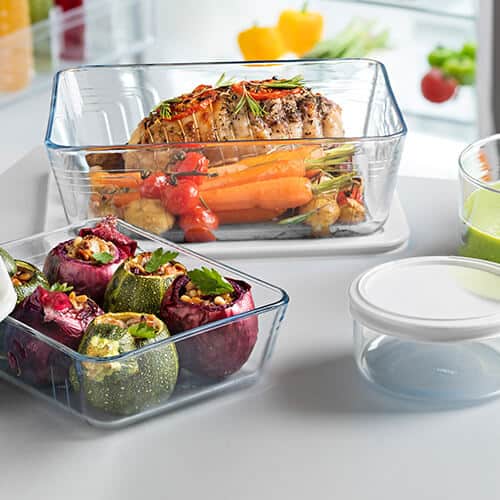
Pyrex glass baking dishes are a staple in many kitchens, including my own. I love that they come in many different sizes and shapes including loaf pans, baking pans and pie plates. I also really like the styles that come with lids to make storage and transport easier. They are also dishwasher safe so the cleaning is so easy!
I have had my Pyrex dishes for years and they still look brand new. I expect them to last forever. One thing to note is that when I bake with the loaf pan I do line it with parchment paper to make it easier to get the baked goods out.
Shop for Pyrex glass loaf pans on Amazon
Shop for Pyrex glass baking dish set (this is the best deal)
Anchor Hocking Glass Bakeware
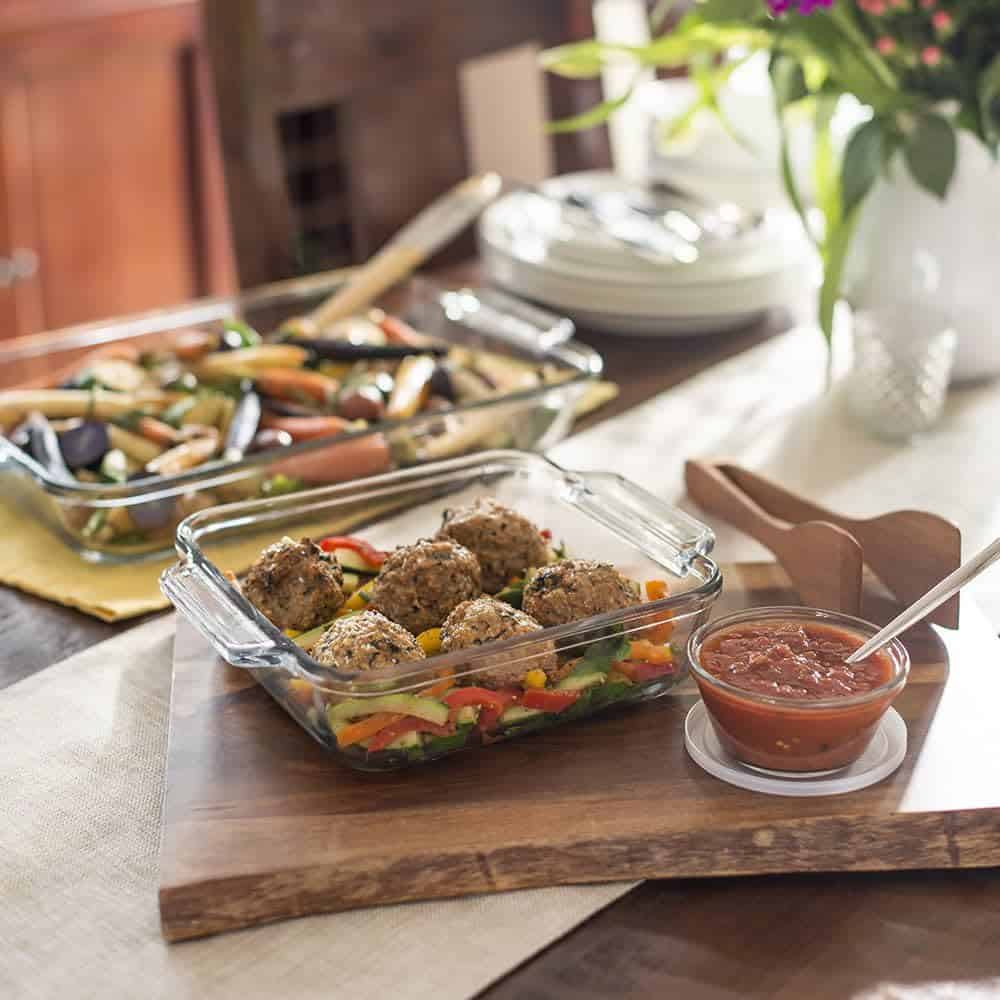
Another well known brand of glass bakeware is Anchor Hocking. I personally own both Pyrex glass dishes and Anchor Hocking glass dishes and like them both equally which is why I am including both brands in this review. These glass baking dishes won't warp, stain, leach chemicals into your food, or change the taste or smell of the food and I have had mine for years and they still look as good as new.
I also love that they are microwave safe, dishwasher safe, and freezer safe. I also really like the ones that come with lids so you can store the food in the same container that you baked it in. I am all for doing less dishes!
Shop for Anchor Hocking glass loaf dishes on Amazon
Shop for Anchor Hocking glass bakeware set (this is the best deal)
Stainless Steel Bakeware
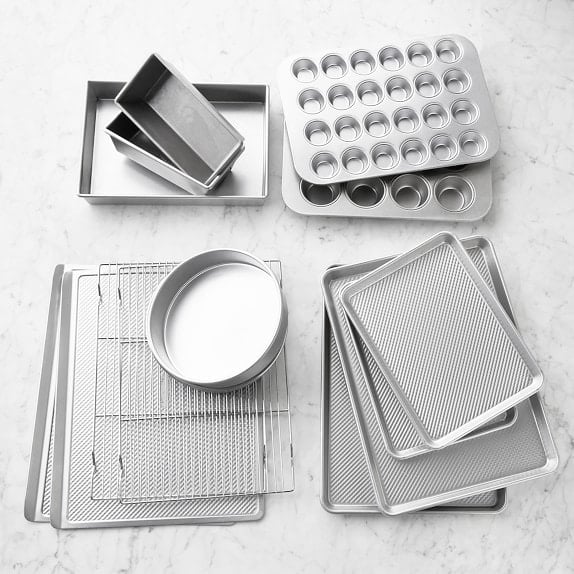
Stainless steel is one of my favourite safe cookware and bakeware options. Stainless steel bakeware is very durable and should last a lifetime as long as you care for it properly. When shopping for stainless steel bakeware just be sure that you look for items without a non-stick coating.
For this section I couldn't pick just one brand of stainless steel bakeware because I have not found one brand that offers all the bakeware options and sizes so instead I have picked pieces from more than one brand so that you have more options to pick from. Some of the best known brands of stainless steel bakeware include TeamFar, Fox Run and Wildone.
I personally use stainless steel baking sheets, muffin pans, cake pans, loaf pans and pizza pans in my home. One tip for making them easier to use is to line them with parchment paper to make them non-stick. I also love that they are dishwasher safe and very affordable.
You can get stainless steel baking sheets or cookie sheets, muffin pans or muffin tins, pizza pans, baking pans, loaf pans, round cake pans and angel food cake pans.
Shop for stainless steel baking sheets
Shop for stainless steel muffin and cupcake baking pans
Shop for stainless steel 8" x 8" baking pans
Shop for stainless steel loaf pans
Xtrema Pure Ceramic Bakeware
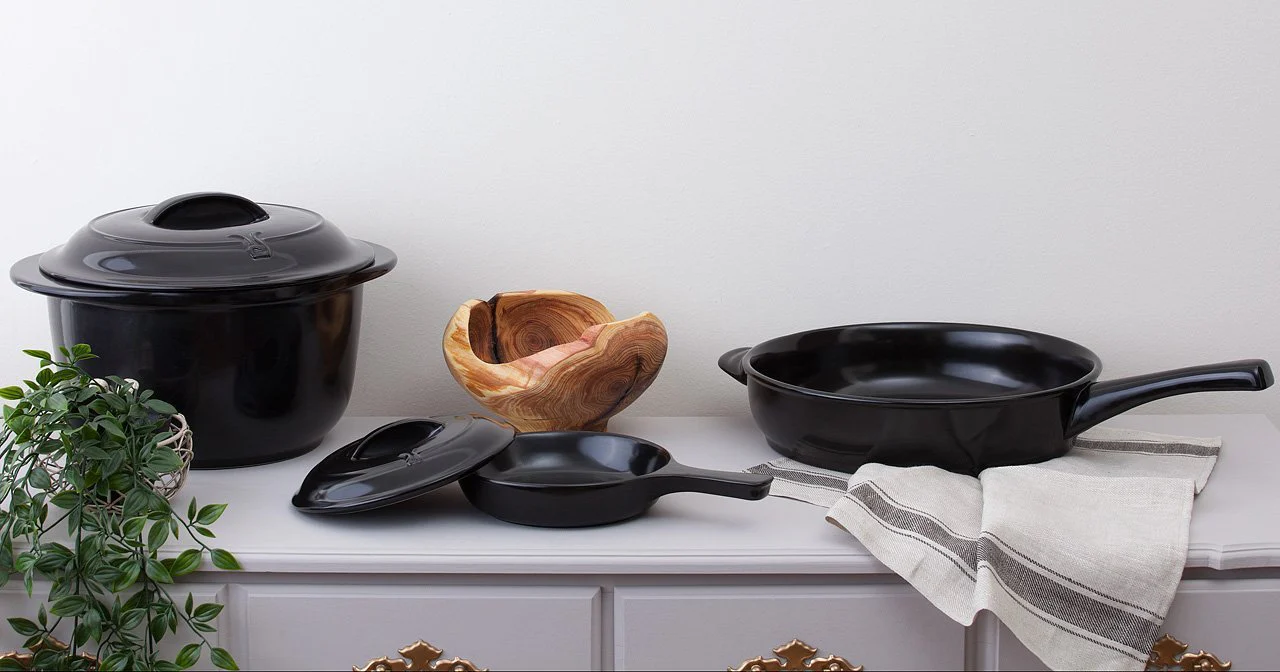
The key here is pure ceramic. This is not the same as ceramic-coated bakeware, which is usually not a safe option. The only brand I know of that makes pure ceramic bakeware is Xtrema which is why they are the only ceramic bakeware I use and recommend. If you happen to know of another brand please let me know.
Xtrema cookware and bakeware is made from 100% pure ceramic. It contains no PFAS chemicals, glues, coatings or dyes, and doesn't leach chemicals, metal, cadmium, or lead into food. It also meets California Prop 65 standards.
Now, Xtrema products are not cheap, but they will last a lifetime unlike ceramic coated or non-stick bakeware which needs to be replaced every few years when the coatings wear down, so in the end, even though it's more of an investment up front, in the long run it will likely actually save you money since you don't have to keep re-purchasing the items every few years.
I initially started with Xtrema cookware but in the last year have invested in their muffin pan and loaf pan and really like them both. The one thing to be aware of with this bakeware is that it is heavy so be careful when handling it. It is also dishwasher safe, microwave safe, and can be used on a bbq.
Shop for Xtrema bakeware and use the code PURENSIMPLE to get 10% off your order.
The best non-toxic bakeware FAQs:
The three safest bakeware materials are:
Glass bakeware
Pure ceramic bakeware
Stainless steel bakeware
Other websites claim that other bakeware such as silicone bakeware and ceramic coated bakeware as safe, but for the reasons I outlined in the post above I don't recommend using those types of bakeware materials.
Stainless steel bakeware is a great non toxic option. Just be aware that stainless still will release small amounts of nickel and chromium so if you are allergic or sensitive to those metals please avoid stainless steel. For the safest stainless steel bakeware choose nickel free, high-quality, surgical-grade stainless steel bakeware and discard it if it gets damaged or ruined.
Some independent leach testing of Le Creuset bakeware has shown lead, cadmium and aluminum to be present, and while this is just a small sample, I am erring on the side of caution for now until more testing can be done to either confirm or refute these results.
I personally do not recommend Caraway ceramic coated products as their ceramic coatings contain nanoparticles, which as I discussed earlier in this post can have potential health risks.
California Proposition 65 is a ballot initiative that was passed by Californian citizens in 1986 in order to address their concerns regarding exposure to toxic chemicals. The act has become a product safety directive meaning that any retailer of a product or service in California is legally responsible for the chemical content of that product or service. There are currently over 900 chemicals in the Proposition 65 List. The chemicals listed are known to cause cancer or birth defects or other reproductive harm. If a product has not met the Prop 65 standards I would not recommend using it.
I hope you found this post on the best non-toxic bakeware helpful! If you have any questions or comments please leave them in the comment section.
Other health info you will want to read:
Our expertise:
Dr. Erin Carter, MD, FRCPC, is a physician with board certifications in internal medicine and rheumatology. She is passionate about environmental health and low toxicity living and has been researching and publishing information in this area for years.

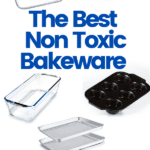
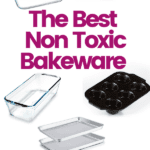
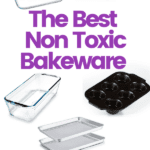
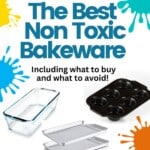
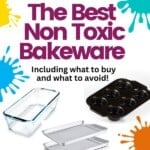
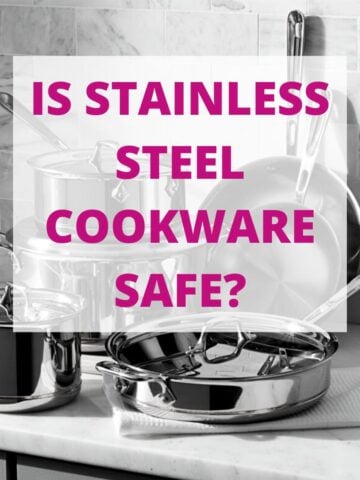
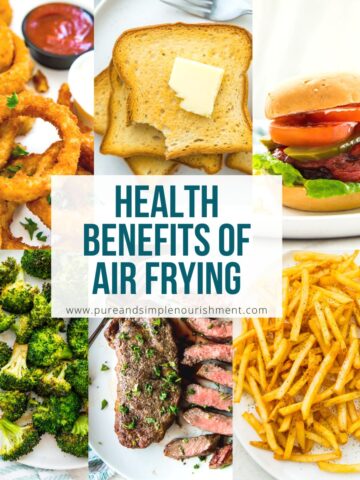
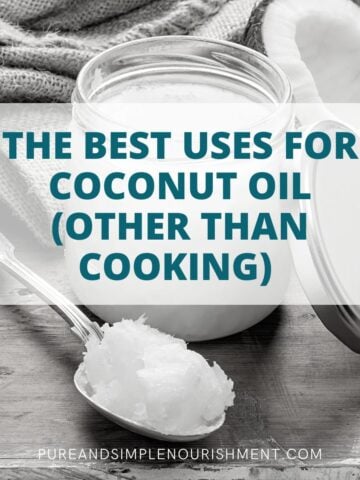
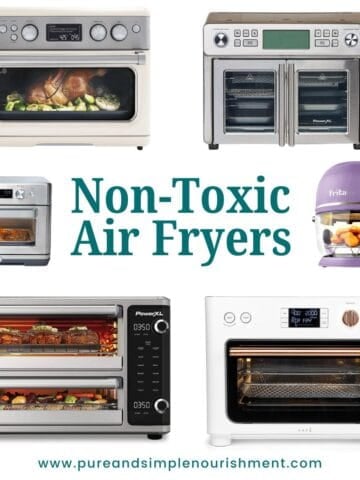
Donna Veldhoen
Hello! Excellent article. I notice using paper or parchment liners was not mentioned. I know there might be issues with paper, but is that any better than using plain silicone bakeware alone ie silicone, or coated bakeware?
Erin Carter
Hi! I did actually mention it in a couple places in the post. I do recommend lining both glass and stainless steel bakeware with parchment paper to make it non-stick. I would not recommend trying to line silicone bakeware with it though. It's basically too flimsy to support the parchment paper. I would just avoid the silicone personally. You could use parchment paper to line non-stick bakeware if you have it as well and still want to try using it.
Thanks for reading!
Var
I haven't been able to find a safe donut baking pan. Any suggestions?
Erin Carter
Oh me either! I was just talking to a friend about this the other day. I am still using my silicone one but would love to find one made of glass or pure ceramic. If I ever find one I will update my post!